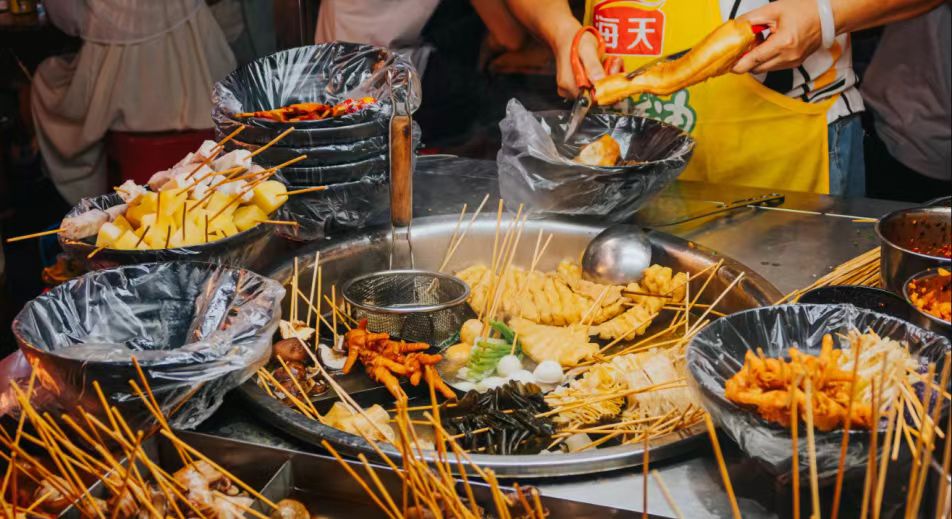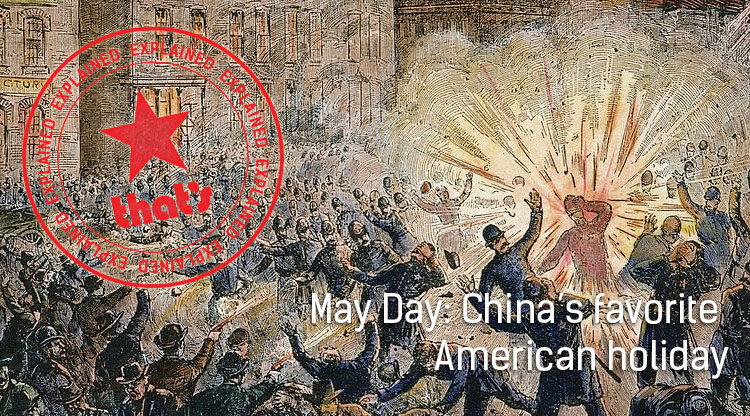Enning Lu (恩宁路) holds a special place in the hearts of Guangzhou’s old-timers. One of the few historic streets to survive the city’s transition from the Qing Dynasty, to the Republic of China period, to today’s PRC, it was once a central hub of old Xiguan. Former residents spent half their lives watching Cantonese opera in the Xiguan Dawu (西关大屋), and many visited the area in search of a very specific metallic composite: bronze.
Just 1 kilometer long, Enning was, and still is, home to all manner of bronze implements: chopsticks, mantel clocks, tea sets – you name it. Back in the old days, before it became Liwan District, Xiguan was where the rich resided, and bronze objects were considered a token of wealth. During that period, almost every household in the area utilized commodities made from the alloy in their daily lives, be it a birdcage or a small censer.
Walking down from the teeming, business-driven Shangxiajiu Pedestrian Street to enter Enning Lu, you start getting a sense of ease, as the noise of store employees yelling out their wares fades away and stillness descends. It is a strong analogy between the present and past made clear by a 15-minute walk. Strolling beside verandaed buildings, you know you are on Enning when the glimmer of golden teapots, Buddha statues, gourds and other glittering arrays catch the eye.

There is a reason why third-place contestants are presented with medals and trophies made of bronze at the Olympics: bronze has a gorgeous luster. Made from copper – one of the first-ever metals employed by human beings – and tin, the compound played a crucial role in China’s Bronze Age. Since then, the techniques used to mold it have been in constant use.
Su Guangwei is one of the bronzesmiths who sells his goods on Enning and has been plying his craft for many decades. When the Chinese government started to control the production of copper, and thus bronze, in 1958, Su worked in a metallurgic plant, allowing him to continue to practice his workmanship. In 1998, when restrictions were loosened, he set up his own business.
I make bronzes as if they are art, in the hope that my works can remain to inspire others to pass on this artistry
Though it ran well enough and Su could make a living, it wasn’t until his son started promoting bronzes as luxuries and works of art instead of run-of-the-mill articles that the artisanship became better known to mass media. Pieces were showcased in exhibitions or made to break Guinness World Records.
With the advent of the cyber era, Su’s business has greatly expanded. According to him, through Taobao he has doubled his sales figures over the course of a decade.

Sales of Xiguan bronze have picked up since 2009, when Guangzhou authorities listed it as one of the city’s intangible cultural heritages. Thanks to this investiture, Enning Lu once more sees people sifting through the street’s offerings, in particular tourists looking for a souvenir.
Prices for the bronzes vary depending on size and intricacy. A pair of small bells will set you back just RMB30, while RMB500 will purchase a fine teapot. A full set of utensils, however, can sell for as high as a thousand yuan.
Surprisingly, the technology used to make them has hardly changed. Most of the items, kitchen tools in particular, are still handmade.
.jpg)
Wu Guoqiang inherited the technique from his father, running the family business that was started by his grandpa in the 30s. Wu began to learn at a young age, watching his father casting, incising, welding and polishing pieces of metal into everyday objects. Years of practice have made him one of the most prominent bronzesmiths among his peers.
Not that you could tell by his attire. A cross-country enthusiast, Wu is dressed in a tight black T-shirt and camouflage pants when we meet. Conversing about his work, he says it is simultaneously an engaging and, in some cases, tedious process. An item only takes shape with tens of thousands of hammer strikes, often too much effort for modern-day youngsters.
Wu notes that many of his trainees drop out of their apprenticeships, but he is undeterred: “I make bronzes as if they are art, in the hope that my works can remain to inspire others to pass on this artistry.”





















0 User Comments